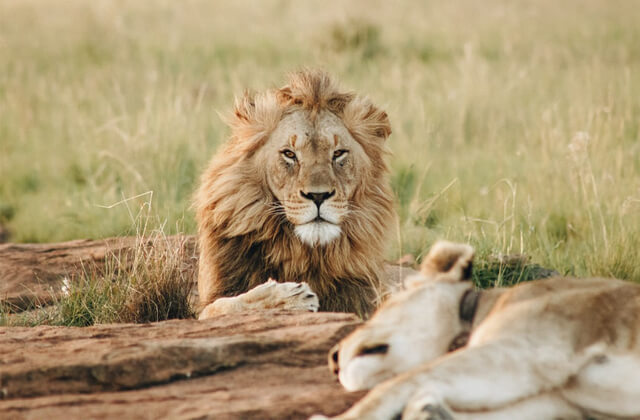Have you ever dreamt of trekking through the majestic Himalayas with the help of seasoned experts? If so, Sherpa travel might be just what you’re looking for. Sherpa travel offers a unique blend of adventure, culture, and breathtaking scenery. But what exactly is Sherpa travel, and why is it so special? Let’s dive in and explore!
History of Sherpa Travel
Origins of the Sherpa People
The Sherpa people have lived in the mountainous regions of Nepal for centuries. Originally from Tibet, they migrated to the Solu-Khumbu region, bringing with them a rich cultural heritage and unparalleled mountaineering skills.
Evolution of Sherpa Travel
Sherpa travel as we know it began to take shape in the early 20th century when Western explorers sought their expertise for Himalayan expeditions. Over the years, the Sherpa have become synonymous with mountain guiding, making them the go-to experts for trekking in Nepal.
Why Choose Sherpa Travel?
Unique Experiences
Choosing Sherpa travel means more than just a guided tour; it’s an immersive experience. You’ll trek through stunning landscapes, visit remote villages, and gain insights into the Sherpa way of life.
Cultural Immersion
Sherpa guides provide a cultural bridge, helping you understand and appreciate local traditions. From participating in festivals to learning about Buddhist practices, Sherpa travel offers a deep dive into a fascinating culture.
Planning Your Sherpa Travel Adventure
Best Times to Visit
The best times to visit Sherpa regions are during the pre-monsoon (March to May) and post-monsoon (September to November) periods. The weather is more stable, and the views are spectacular.
Essential Gear and Equipment
Packing the right gear is crucial. Essentials include sturdy trekking boots, warm clothing, a good quality backpack, and altitude sickness medication. Your Sherpa guide can help ensure you have everything you need.
Popular Sherpa Travel Destinations
Everest Base Camp
A trek to Everest Base Camp is a bucket-list adventure. You’ll follow in the footsteps of legendary climbers and enjoy awe-inspiring views of the world’s highest peak.
Annapurna Circuit
The Annapurna Circuit offers diverse landscapes, from lush subtropical forests to arid high-altitude deserts. It’s a challenging but rewarding trek that showcases Nepal’s natural beauty.
Other Notable Locations
Other popular Sherpa travel destinations include the Langtang Valley, Manaslu Circuit, and the Gokyo Lakes. Each offers unique experiences and stunning scenery.
Cultural Etiquette and Practices
Respecting Sherpa Traditions
When traveling in Sherpa regions, it’s important to respect local customs. This includes dressing modestly, asking for permission before taking photos, and being mindful of religious practices.
Understanding Local Customs
Sherpa customs are deeply rooted in Buddhism. You might witness prayer ceremonies, visit monasteries, or see mani stones and prayer flags along the trails. Understanding these practices enhances your travel experience.
Sherpa Cuisine
Traditional Dishes to Try
Sherpa cuisine is hearty and delicious. Don’t miss out on trying dishes like momos (dumplings), thukpa (noodle soup), and dal bhat (lentil soup with rice). These meals are perfect for refueling after a long trek.
Dining Etiquette
Dining with Sherpas is a communal affair. It’s polite to accept food and drink when offered, and always use your right hand to eat. Sharing meals is a great way to bond with your guides and fellow travelers.
Safety Tips for Sherpa Travel
Altitude Sickness Prevention
Altitude sickness can be a serious concern. To prevent it, ascend slowly, stay hydrated, and listen to your body. Your Sherpa guide will monitor your health and provide advice on acclimatization.
Navigating the Terrain
Sherpa regions feature rugged terrain. Always follow your guide’s instructions, stay on marked trails, and be prepared for variable weather conditions.
Sustainable Sherpa Travel
Supporting Local Communities
Supporting local communities is vital. Choose local guides, stay in Sherpa-owned lodges, and purchase handmade crafts. This helps sustain the local economy and preserves Sherpa culture.
Eco-Friendly Practices
Minimize your environmental impact by using reusable water bottles, avoiding single-use plastics, and following the Leave No Trace principles. Sherpa travel is about respecting nature and leaving it pristine for future generations.
How to Choose a Sherpa Guide
Qualifications to Look For
Look for guides with certification from the Nepal Mountaineering Association or the Trekking Agencies’ Association of Nepal. Experience and local knowledge are key.
Questions to Ask Your Guide
Before hiring a guide, ask about their experience, language skills, and familiarity with the trek. A good guide should be able to provide references and a detailed itinerary.
Accommodation Options
Teahouses and Lodges
Teahouses and lodges offer basic but comfortable accommodation. They are a great way to experience Sherpa hospitality and meet fellow travelers.
Camping Tips
If you prefer camping, ensure you have quality gear and are prepared for cold nights. Your guide can arrange camping permits and set up campsites.
Adventure Activities in Sherpa Regions
Trekking and Hiking
Trekking and hiking are the main activities. Routes range from easy walks to strenuous climbs, catering to all levels of fitness and experience.
Mountaineering
For the more adventurous, mountaineering offers the ultimate challenge. Whether summiting a 6,000-meter peak or attempting Everest, Sherpa guides provide the expertise needed for success.
Health and Wellness Tips
Staying Hydrated
Staying hydrated is crucial at high altitudes. Drink plenty of water, and avoid alcohol and caffeine, which can dehydrate you.
Coping with Physical Demands
Trekking in Sherpa regions is physically demanding. Prepare by training beforehand, eating well, and getting plenty of rest. Listen to your body and take breaks as needed.
Stories from Sherpa Travelers
Personal Experiences
Many travelers return from Sherpa regions with stories of adventure and camaraderie. From overcoming physical challenges to forging lasting friendships, these experiences are unforgettable.
Lessons Learned
Traveling with Sherpas teaches resilience, humility, and a deeper appreciation for nature. It’s a journey that transforms you, leaving lasting memories and valuable life lessons.
Conclusion
Sherpa travel offers a unique blend of adventure, culture, and natural beauty. Whether you’re trekking to Everest Base Camp or exploring lesser-known trails, you’ll be guided by experts who know the mountains like the back of their hand. Embrace the journey, respect the culture, and create memories that will last a lifetime.
FAQs
Q. What is the best time of year to visit Sherpa regions?
A. The best times to visit are during the pre-monsoon (March to May) and post-monsoon (September to November) periods when the weather is stable and the views are spectacular.
Q. How can I prepare for the altitude?
A. To prepare for the altitude, ascend slowly, stay hydrated, and consider taking altitude sickness medication. Training beforehand can also help your body adjust.
Q. What are the costs associated with Sherpa travel?
A. Costs can vary but typically include permits, guide fees, accommodation, and food. Budget for additional expenses like gear rental and souvenirs.
Q. Are there any restrictions for foreign travelers?
A. Most Sherpa regions are open to foreign travelers, but it’s important to check visa requirements and any travel advisories before planning your trip.
Q. How can I ensure my trip is sustainable?
A. Ensure your trip is sustainable by supporting local businesses, minimizing waste, and respecting the environment. Follow the Leave No Trace principles and be mindful of your impact.


